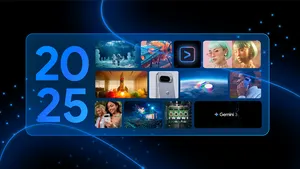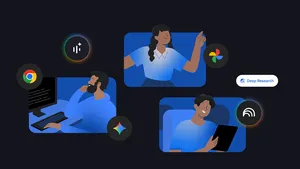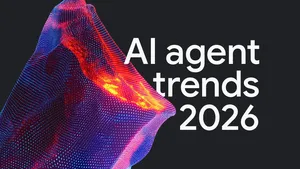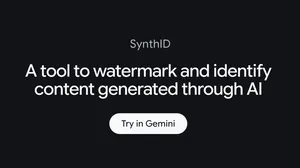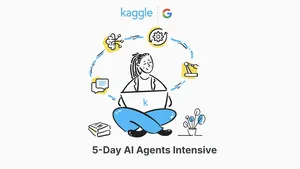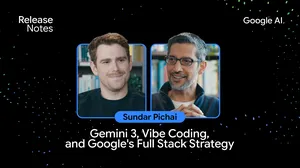Can AI save nurses millions of hours of paperwork?
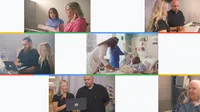
Each day, across HCA Healthcare’s 190 hospitals and approximately 2,400 ambulatory sites of care, nurses repeat the same task around 60,000 times: passing patient-specific information from one nurse to another during shift change to help ensure care continuity and safety.
It’s an everyday task that’s anything but routine. The notes are a main part of the patient handoff that happens when nurses change shifts every 12 hours. Nurse handoffs are a crucial step to ensure uninterrupted care between provider teams, as one nurse passes along their carefully collected information to the next. Patient safety requires timely and relevant handoff communication, making these records much more than simple paperwork.
“Depending on the types of patients and which nurses are giving the report, you could end up with a pretty big stack of papers,” explains Samantha Hall, a registered nurse at TriStar Hendersonville Medical Center, an HCA Healthcare hospital in Tennessee.
It’s such an important and complex challenge that when HCA Healthcare began exploring how it might bring generative AI into its operations, the patient handoff was one of the first opportunities it decided to pursue.
Over the course of 2024, HCA Healthcare’s Digital Transformation and Innovation (DT&I) department worked with Google Cloud’s healthcare solutions team to build and optimize a new AI-powered app, called Nurse Handoff.
“Nurse handoff communication is critical to any hospital and is fundamental to the role of registered nurses for safely exchanging communication and care about a patient,” said Dr. Whitney Staub-Juergens, vice president of transformation operations at HCA Healthcare. “It’s how they fundamentally get organized for the next 12 hours.”
Nurse Handoff is designed to collect and organize patient notes digitally, for easier reference and accuracy. The hope is, it can help nurses prep for their shift in a whole new way, giving them back time to reinvest with their patients.
Millions of hours invested
If Nurse Handoff could have even a small impact on how handoffs happen, nurses could claim back some of the 10 million hours that HCA Healthcare estimates they collectively spend each year on these paper-based tasks. More time with patients, as well as any increase in accuracy, or new insights from analytics, should lead to better health outcomes.
And since HCA Healthcare is the largest hospital provider in the U.S., both by number of hospitals and number of beds, any success it has would be likely to spread across the industry.
Given the care complexities medical teams can face day to day, Nurse Handoff was designed to be as simple and straightforward as its name.
The team developed a tool, named Nurse Handoff, that shows nurses the electronic health record on one side and the AI-generated output on the other. Using a hospital-provided mobile device, nurses are able to easily review and add information throughout their shift. Google’s leading generative AI models, running within the Nurse Handoff app, can ingest, analyze and develop a cohesive and concise view of pertinent patient information for the oncoming nurse for handoff.
Traditionally, nurses rely upon their recollection of events, conversations, and data points, leaving room for error and inconsistency in the information given during handoff. Using Nurse Handoff during their shift, nurses can easily find the information they and their peers have collected through the automated shift report and add their own notes, so the system keeps building. This can include relevant patient data from notes, orders, tests, and more. All this happens within a highly secure cloud environment, to keep patient information confidential.
HCA Healthcare is currently piloting Nurse Handoff in five of its hospitals, gathering feedback and continuing to fine tune both its AI model and the user experience.
Nurses’ orders
An important part of building an effective app that frontline nurses would want to use was working directly with them on its development. That included K.C. DeShetler, a registered nurse on the HCA Healthcare DT&I team who became product owner for Nurse Handoff.
“We fed our model the information nurses want to know, prompted the model in a multitude of ways, used retrieval augmented generation to identify citations for the generated content, provided templates for organizing information the way we want and so forth,” DeShelter explains.
The approach they settled on shows nurses a familiar electronic health record on one side of the screen and an AI-generated output on the other. Hall, the nurse from Tennessee, was among a group of early testers who reviewed the model’s output to highlight what was unnecessary, repetitive, inaccurate or missing.
“We went through that process three or four different times,” Hall recalls. “And each time, it became a little bit more accurate, a little less filled with fluff that we don't need. The more we worked with it and provided our feedback, the more useful it became for the handoff setting.”
As HCA Healthcare’s five-hospital pilot has progressed, plans call for a version to be rolled out for use by all 99,000 nurses working across the healthcare system. So far, the solution looks very promising: Nurses testing the Nurse Handoff tool at one HCA Healthcare facility have rated it as 86% factual and 90% helpful.
“When I talk to direct care nurses and nurse leaders about technology and the emergence of AI in nursing,” Dr. Staub-Juergens says, “I often challenge them to be bold, be brave, take the keys to the car, get in the driver's seat and use their voices to drive the design of the solutions moving forward.”
